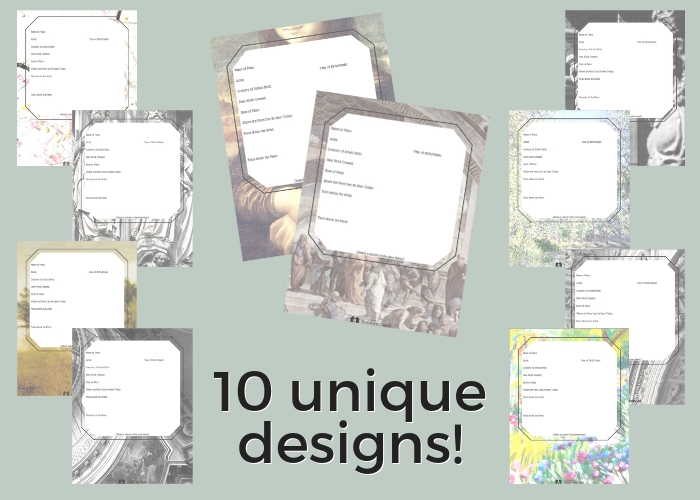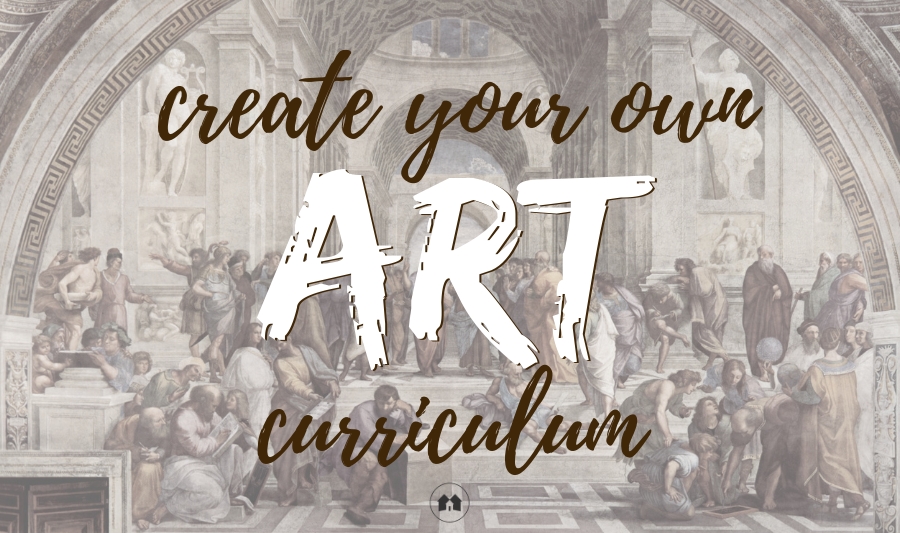Walking the aisles of a local homeschool convention this past spring, no shortage of things caught my attention. Rack after rack overflowing with books of every type (be still, my beating heart!), tables full of amazing curricula, software, DVDs. As a homeschooling mom, I gravitate toward resources for the subjects in which I feel weakest. Over the course of this past summer, I added we-won’t-say-how-many science kits and math manipulatives to our rather extensive collection. But we would be buried to our eyeballs if I took home every educational help that struck my fancy.
Art is an area where I’ve always felt unprepared. I know moms who incorporate drawing and painting into school on a daily basis; a few others left behind a full-time career as an artist to homeschool their children. That’s not me. Basic art classes didn’t prepare me to teach shading, perspective, and other techniques. My children have largely been self-taught when it comes to the mechanics of drawing, painting, sculpting, or otherwise expressing themselves … and several of them have actually learned quite well, with lots of trial-and-error fueled (at least in part) by observing the technique of talented artists.
I am absolutely convinced there are some subjects you just can’t DIY. (Higher level math would be one example.) But art simply isn’t one of those. Many of the world’s greatest masterpieces are public domain — old enough that no one owns exclusive rights to reproduce them — and if you’re willing to put in just a bit of effort, you can achieve an impressive art education for your child without the expense of a ready-made program. Your child may not be the next Picasso, but he or she can be literate in the style, technique, and works of the world’s great artists.
Those of you who regularly read our blog may recall the Laura’s Top Ten: Art Appreciation post from August 2017. In it, Laura shared the idea of cultivating an appreciation for art by introducing one important piece at a time, giving a child time to study it in-depth and create a notebook to revisit what he’s learned.
This month is National Arts and Humanities Month, and in honor of that, we’re building on Laura’s idea by offering a completely FREE set of
Art Appreciation Notebooking Pages
—10 different designs, available for download in a single PDF file. Visit the Laura’s Top Ten post and you’ll be able to download another free page, as well.
Each notebooking page is a simple outline for studying a new piece of art. It provides space to record the following:
- name of the piece,
- artist’s name,
- artist’s date of birth (and death, if applicable),
- artist’s country of birth,
- date the work was created,
- style of the piece,
- where it can be seen today,
- interesting facts about the artist,
- facts about the piece itself, and
- space to attach a picture of the artwork.
In addition to the printable pages, the list of resources below is a great jumping-off point to begin incorporating art education into homeschooling. Books and art cards are listed in order of their appropriate audience, youngest to oldest. Of course, we suggest that you review them yourself (especially the books and cards toward the end of the lists) to verify that the artwork is appropriate for your child. Artistic significance aside, mom—or dad—knows best whether your kids are ready to study Botticelli’s Birth of Venus or Michelangelo’s famous sculpture of David.
Books:
- The Art Book for Children from Phaidon Press
- A Child’s Introduction to Art: The World’s Greatest Paintings and Sculptures by Heather Alexander
- Art That Changed The World by DK Publishing
- An Eye For Art: Focusing on Great Artists and Their Work from the National Gallery of Art
- Art: Over 2,500 Works from Cave to Contemporary by Nigel Ritchie
Art Cards:
- Famous Painting Cards by Sarah Courtauld (published by Usborne Books)
- The Art Box from Phaidon Press
- The Louvre Art Deck: 100 Masterpieces from the World’s Most Popular Museum
- The Vatican Art Deck: 100 Masterpieces
- 250 Masterpieces in Western Painting
You might also check for Dover Postcard books on Amazon or on the Dover Publications website. They have a small assortment of art postcard books (that are very economical at as little as $1.99 for 6 postcards) depicting classic works by well-known artists such as Renoir, Degas, van Gogh, Kandinsky, Kahlo, and others.
Hundreds of printable works of art from the National Gallery of Art are available in an online gallery, and the organization also provides free lesson plans for PreK through college ages.
Isn’t it amazing that God created individuals with such ability to reflect the world around them through creative expression? When you share that with your children, it opens up a whole new universe of beauty and wonder—and however you choose to begin, you’ll never regret taking the first steps to incorporate great art into your homeschooling.
Download your own set of
Art Appreciation Notebooking Pages
today!

What a great idea and resource!